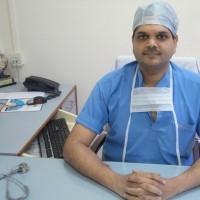What Is Minimal Invasive Heart Surgery
Posted by on Saturday, 23rd July 2011
What Is minimal invasive cardiac SurgeryMinimally invasive heart surgery (also called keyhole surgery) is performed through small incisions, sometimes using specialized surgical instruments. The incision used for minimally invasive heart surgery is about 2 to 3 inches instead of the 6- to 8-inch incision required for traditional surgery.
Benefits of Minimally Invasive Surgical Techniques
The benefits of minimally invasive heart surgery techniques include:
• Small incisions
• Small scars
• Less pain
• Shorter hospital stay after surgery: The average stay is 3 to 5 days after minimally invasive surgery, while the average stay after traditional heart surgery is 7 to 10 days
• Low risk of infection
• Low risk of bleeding and blood transfusion
• Shorter recovery time and faster return to normal activities/work: The average recovery time after minimally invasive surgery is 1 to 4 weeks, while the average recovery time after traditional heart surgery is 6 to 8 weeks.
• Division of the breastbone is not needed .
Important Note: Not everyone is a candidate for these surgical techniques.
What are the Types of Minimally Invasive Heart Surgeries
Minimally Invasive Valve surgeries, including valve repairs and valve replacements, are the most common type of minimally invasive surgery.
Minimally invasive coronary artery bypass graft surgery is an option for some patients who require a left internal mammary artery bypass graft to the left anterior descending artery and with the advancement of instrumentation it can be done in multivessel disease also.
Saphenous (leg) vein harvest also may be performed using small incisions.
Minimally Invasive congenital heart surgeries like closure of Atrial septal defects and ventrcular septal defects.
Can all heart surgeries be performed by minimal invasive techniques
There may be a trend to perform more cases with minimally invasive techniques, but there will always be certain cases that will require traditional and conventional incision..
Who Is a Candidate for Minimally Invasive Cardiac Surgery
The surgeon will review the results of the diagnostic tests before scheduled surgery to determine if particular patient is a candidate for a minimally invasive technique. The surgical team will carefully compare the advantages and disadvantages of these techniques with those of traditional surgery. The type of treatment recommended for a particular patient depends on several factors, including the type and severity of heart disease, age, medical history and lifestyle.
What is the Recovery time after the minimal invasive heart surgery
Patients who have minimally invasive cardiac surgery may be able to go home 2 to 5 days after surgery. The healthcare team will follow the progress and helps in recovery as quickly as possible.
The healthcare team will provide specific instructions for the recovery and return to work, including guidelines for activity, driving, incision care and diet.
When Can I go back to work after this surgery
In general, you may be able to return to work (if you have a sedentary job), resume driving and participate in most non-strenuous activities within 1 to 4 weeks after traditional minimally invasive heart surgery. You can resume heavy lifting and other more strenuous activities within 5 to 8 weeks after surgery. Your healthcare team will provide specific guidelines based on your rate of recovery.
Recovery for all patients after heart surgery
To maintain the cardiovascular health after surgery, we strongly encourage the patients to make lifestyle changes and take the medications as prescribed. Heart-healthy lifestyle changes that are important to recovery include:
• Quitting smoking
• Treating high cholesterol
• Managing high blood pressure and diabetes
• Exercising regularly
• Maintaining a healthy weight
• Eating a heart-healthy diet
• Participating in a cardiac rehabilitation program, as recommended
• Following up with your doctor for regular visits
What are the disadvantages of minimally invasive surgery?
Being a new technology, there may be an associated learning curve with the Surgeon performing the case. Cost of operation is also little more compared to the tradional surgery but the benifits are more.


 Category (
Category ( Views ( 13734 ) | User Rating
Views ( 13734 ) | User Rating